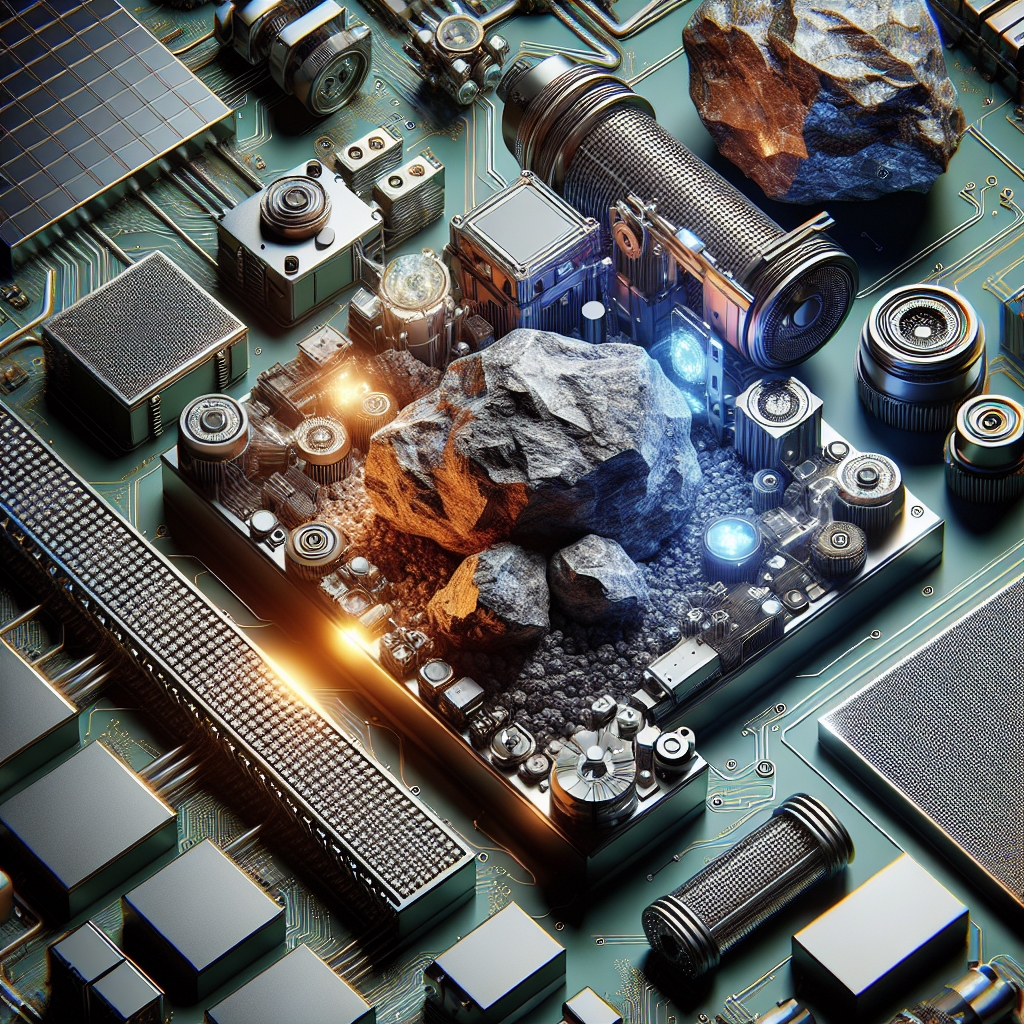The economic importance of rare earth elements (REEs) in the 21st century cannot be overstated. These elements, often hidden in the periodic table’s lanthanide series, along with scandium and yttrium, are critical to a myriad of modern technologies. From smartphones and electric vehicles to wind turbines and military defense systems, REEs are integral to the fabric of contemporary life. This article delves into the significance of these elements, exploring their applications, the challenges associated with their supply, and the global efforts to secure a sustainable future for their production and use.
Applications and Uses of Rare Earth Elements
Rare earth elements are pivotal in the manufacturing of a wide range of high-technology products. Neodymium and dysprosium, for example, are key components in the powerful magnets used in wind turbines and electric vehicle motors, significantly contributing to the green energy transition. Europium and terbium play crucial roles in the vibrant colors of modern displays, from smartphones to flat-screen TVs. Additionally, rare earth elements are essential in the production of high-strength alloys used in aerospace and defense applications, highlighting their strategic importance.
Beyond these well-known uses, REEs are also critical in the realm of healthcare and scientific research. Gadolinium, with its exceptional magnetic properties, is used as a contrast agent in MRI scans, improving the clarity of the images. Lanthanum, on the other hand, is a key ingredient in camera lenses, including those used in smartphones, contributing to the high-quality photographs we take for granted. The versatility and unique properties of REEs make them indispensable across various sectors, driving the demand ever higher.
Challenges in Supply and Sustainability
Despite their abundance in the Earth’s crust, rare earth elements are seldom found in concentrated deposits that are economically viable to mine. This scarcity of accessible resources, combined with the environmental and political challenges associated with rare earth mining and processing, has led to a complex global supply chain. China, holding significant reserves of these minerals, dominates the market, raising concerns about supply security, especially among major consumers like the United States, the European Union, and Japan.
The environmental impact of rare earth mining is another significant challenge. The extraction and processing of REEs involve intensive use of water and chemicals, leading to pollution and health hazards in mining areas. Efforts to mitigate these impacts include developing more sustainable mining techniques and recycling programs for end-of-life products containing rare earth elements. Recycling, although currently limited by technical and economic factors, represents a promising avenue to reduce dependence on primary sources and minimize environmental damage.
In response to these challenges, countries and companies are investing in research and development to find alternative materials with similar properties to rare earth elements, but with less environmental and geopolitical baggage. Meanwhile, international cooperation and investment in sustainable mining practices are seen as essential to ensuring a stable and secure supply of REEs in the long term.
Conclusion
The economic importance of rare earth elements in the 21st century is clear, given their critical role in high-technology applications and green energy solutions. However, the challenges associated with their supply and the environmental impact of their extraction highlight the need for a balanced approach to their use. Through innovation in recycling, research into alternative materials, and international collaboration on sustainable mining practices, it is possible to secure the benefits of rare earth elements while mitigating the risks. As we move forward, the strategic importance of REEs will undoubtedly continue to grow, underscoring the need for concerted efforts to address the challenges they present.

